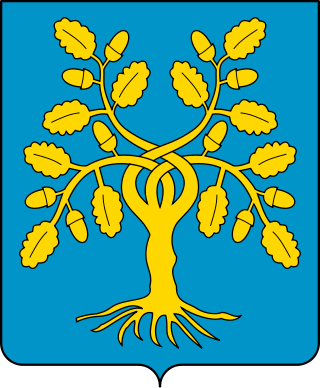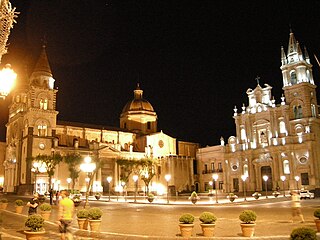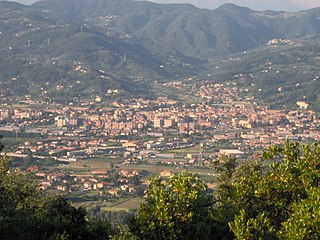
The Priamar Fortress (Italian: Fortezza del Priamar) is a fortress occupying the hill with the same name above the port of Savona, Liguria, northern Italy.

The Priamar Fortress (Italian: Fortezza del Priamar) is a fortress occupying the hill with the same name above the port of Savona, Liguria, northern Italy.
Traces of pre-Roman, Roman and Byzantine presences in the site have been excavated in the past centuries, and are now on display in Savona's Archaeological Museum.
The cathedral of Santa Maria Maggiore (later renamed Santa Maria di Castello) was erected on the promontory between 825 and 887. [1]
The fortress was built in 1542 by the Republic of Genoa on a promontory where in medieval times was the nucleus of Savona, by design of architect Giovanni Maria Olgiati .
In the 17th century the fortress received bastions designed by the Spanish Royal engineer Domenico Sirena, and in the 18th century were added the commissar's, officers' and Sibilla palaces. In order to create space for the new structures, edifices of the medieval Savona, including the cathedral Santa Maria di Castello (built in the 9th century over a pagan temple), were demolished.

In 1746, in the course of the War of Austrian Succession, it was stormed by the Piedmontese grenadiers. In 1820, after the annexation of Liguria to Piedmont, it became a prison. During the Risorgimento, Italian patriot Giuseppe Mazzini was jailed in the Priamar Fortress.
The fortress, which could house up to 500 prisoners, remained Italy's main military prison until 1903, when its role was taken by the castle of Gaeta.
After the outbreak of the coronavirus, the Fortress reopened to the public in June 2020. [2] In January 2023, the front entrance portal was closed because of wall stones falling down. [3]
The Civic Archaeological Museum and the Sandro Pertini and Renata Cuneo Museum are housed in the fortress' Palazzo degli Ufficiali. The Palazzo della Sibilla is a congress center. The Piazzale del Maschio contains a 600-seat theater. The square Piazzale del Maschio is the highest point of the Fortress, and the square Piazzale della Sibilla stands where the cathedral Santa Maria di Castello used to be erected. [1]

The House of Della Rovere was a noble family of Italy. It had humble origins in Savona, in Liguria, and acquired power and influence through nepotism and ambitious marriages arranged by two Della Rovere popes: Francesco Della Rovere, who ruled as Sixtus IV from 1471 to 1484) and his nephew Giuliano, who became Julius II in 1503. Sixtus IV built the Sistine Chapel, which is named for him. The Basilica of San Pietro in Vincoli in Rome is the family church of the Della Rovere. Members of the family were influential in the Church of Rome, and as dukes of Urbino; that title was extinguished with the death of Francesco Maria II in 1631, and the family died out with the death of his granddaughter Vittoria, Grand Duchess of Tuscany.

Lucca is a city and comune in Tuscany, Central Italy, on the Serchio River, in a fertile plain near the Ligurian Sea. The city has a population of about 89,000, while its province has a population of 383,957.

Liguria is a region of north-western Italy; its capital is Genoa. Its territory is crossed by the Alps and the Apennines mountain range and is roughly coextensive with the former territory of the Republic of Genoa. Liguria is bordered by France to the west, Piedmont to the north, and Emilia-Romagna and Tuscany to the east. It rests on the Ligurian Sea, and has a population of 1,557,533. The region is part of the Alps–Mediterranean Euroregion.

Arezzo is a city and comune in Italy and the capital of the province of the same name located in Tuscany. Arezzo is about 80 kilometres southeast of Florence at an elevation of 296 metres (971 ft) above sea level. As of 2022, the population was about 97,000.

Savona is a seaport and comune in the west part of the northern Italian region of Liguria, capital of the Province of Savona, in the Riviera di Ponente on the Mediterranean Sea.

The province of Chieti is a province in the Abruzzo region of Italy. Its provincial capital is the city Chieti, which has a population of 50,770 inhabitants. The province has a total population of 387,649 inhabitants as of 2017 and spans an area of 2,599.58 square kilometres (1,003.70 sq mi). It is divided into 104 comuni (comune) and the provincial president is Mario Pupillo.

Acireale is a coastal city and comune in the north-east of the Metropolitan City of Catania, Sicily, southern Italy, at the foot of Mount Etna, on the coast facing the Ionian Sea. It is home to numerous churches, including the Neo-Gothic St. Pietro's Basilica, St. Sebastiano's Basilica in the Sicilian Baroque style, and the 17th century Acireale Cathedral, and a seminary, for the training of priests. Acireale is also noted for its art and paintings: the oldest academy in Sicily, the "Accademia dei Dafnici e degli Zelanti", is located here.

Campo Marzio is the 4th rione of Rome, identified by the initials R. IV. It belongs to the Municipio I and covers a smaller section of the area of the ancient Campus Martius. The logo of this rione is a silver crescent on a blue background.

Sarzana is a town, comune (municipality) and former short-lived Catholic bishopric in the Province of La Spezia, Liguria, Italy. It is 15 kilometres (9 mi) east of Spezia, on the railway to Pisa, at the point where the railway to Parma diverges to the north. In 2010, it had a population of 21,978.
Bernardo Castello (1557–1629) was an Italian painter of the late-Mannerist style, active mainly in Genoa and Liguria. He is mainly known as a portrait and historical painter.

Diano Castello is a comune (municipality) in the Province of Imperia in the Italian region Liguria, located about 90 kilometres (56 mi) southwest of Genoa and about 5 kilometres (3 mi) northeast of Imperia. As of 31 December 2004, it had a population of 2,061 and an area of 6.0 square kilometres (2.3 sq mi).

Cairo Montenotte is a comune (municipality) in the Province of Savona in Liguria, an Italian region located 50 kilometres (31 mi) west of Genoa and 20 kilometres (12 mi) northwest of Savona. Located in Val Bormida, it is a member of the Comunità Montana Alta Val Bormida. It is considered to be the main centre of Val Bormida and it has 12691 inhabitants. It is the fourth municipality in the province together with Savona, Albenga and Varazze, as well as the most popular municipality in Liguria among those without outlet on the sea. The municipal area is the biggest in the province behind Sassello, and the fifth in Liguria.

Gothic architecture appeared in the prosperous independent city-states of Italy in the 12th century, at the same time as it appeared in Northern Europe. In fact, unlike in other regions of Europe, it did not replace Romanesque architecture, and Italian architects were not very influenced by it. However, each city developed its own particular variations of the style. Italian architects preferred to keep the traditional construction methods established in the previous centuries; architectural solutions and technical innovations of French Gothic were seldom used. Soaring height was less important than in Northern Europe. Brick rather than stone was the most common building material, and marble was widely used for decoration. In the 15th century, when the Gothic style dominated both Northern Europe and the Italian Peninsula, Northern Italy became the birthplace of Renaissance architecture.

The historic centre of Florence is part of quartiere 1 of the Italian city of Florence. This quarter was named a World Heritage Site by UNESCO in 1982.

Tuccio d'Andria or Tuzio d'Andrea was an Italian painter.

The Archaeological Museum of Savona is located in Palazzo della Loggia inside the Priamar Fortress. It presents the history of the Priamar promontory and the town of Savona. On the exposition are old collections of objects from around the Mediterranean and artifacts from the 20th century excavations of the fortress and its surrounding. The museum has two floors and inside it is possible to see original excavation pits.

Genoa is the capital of the Italian region of Liguria and the sixth-largest city in Italy. In 2015, 594,733 people lived within the city's administrative limits. As of the 2011 Italian census, the Province of Genoa, which in 2015 became the Metropolitan City of Genoa, had 855,834 resident persons. Over 1.5 million people live in the wider metropolitan area stretching along the Italian Riviera.